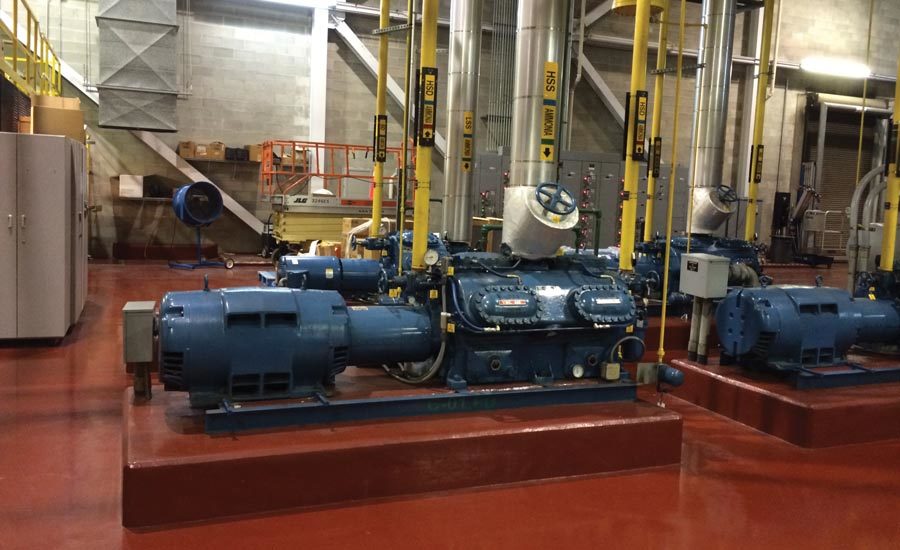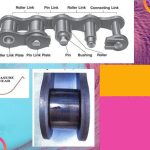Moving heat from a lower temperature to higher temperature requires work to be done , according to second law of thermodynamics and this work can be done in many ways in different systems. The most widely used techniques to move heat from lower temperature to higher temperatures are
1. Vapour Compression systems
2. Vapour absorption systems.
3. Peltier systems
4. Magnetic refrigeration systems
Vapour Compression systems are used onboard because of its high efficiency and co-efficient of performance compared to vapour absorption systems. Vapour absorption cycles are not used now a days and has been phased out towards the beginning of 20th century.
Vapor Compression systems Explained:
Change of state is always associated with a latent heat of phase change and is absorbed from the surroundings. This is the principle behind vapour compression systems. The vapour used is cycled between liquid and gaseous phases. The liquid to gas phase change absorbs heat from the surrounding( the evaporator) and vapour to liquid change needs work to be done, and is supplied by a compressor.
Thus , in a vapour compression system, we must have a compressor which Compresses the refrigerant vapor into high pressure vapour, a condenser which cools the sub cooled liquid vapour into liquid phase, a TEV or thermostatic expansion valve or a capillary tube, which regulates the flow of liquid and an evaporator in which the liquid refrigerant absorbs the heat and forms into saturated vapour. The vapour which comes out from the evaporator coils is not really saturated, but superheated , the reason of which is explained below.
The compressor:
Marine refrigeration systems widely use a multi-cylinder electric motor driven reciprocating compressors. The advantage of such compressors is that the control of load can be employed using cutting in and cutting out of individual cylinders, which adds to be overall efficiency of the system.
The Air condition compressors crankcase is pressurized
The Air condition compressors crankcase is pressurized because of a bypass connection between compressor suction and the crankcase. This line is given because we cannot afford to lose even a small amount of refrigerant from the system. The piston- liner surface is not perfectly sealed, even if high tech seal rings are used. There is always a little leakage from this interface, as in any other reciprocating systems. If the crankcase was vented to atmosphere, the refrigerant would escape into atmosphere. This gas which leaks from the interface is collected into the crank case of the compressor and is used back in the next cycle, by connecting crankcase and compressor suction side. Also oil carry over will be there in this arrangement which needs to be coped for.
In latest systems where oil ingress into the system is very much unacceptable, we use teflon or PTFE rings, which sweeps out the scope for piston lubrication. Such systems use a cross-head type piston, and isolates the liner and crankcase.
This is one of the major difference between Air condition compressor and Air compressors. Air compressor crankcase are open to atmosphere , as there is a breather given for the crank-case.
Varying the load on compressors:
The A/C compressor is having more than one unit when load control is required. The multi stage system is used so as to run the compressor at different loads. usually stages are set at 33%,66% and 100% loads. Each unit of compressors put in load according to the load on the system. A solenoid operating valve will keep the suction port depressed always when a unit is not in use. This removes the load on that particular unit. When the particular unit is needed to be on load, and add to the cooling capacity of the system the solenoid valve operates and removes the constraint placed earlier on the suction valve.
A compressor stages are usually setup to cut-in and cut-out based on the L.P or low pressure reading in the compressor suction side. This is explained well below in respective sections.
L.P and H.P sides of a compressor- The distinction -Why ??
The compression discharge line will be always pressurized compared to the suction side, and thus is called High Pressure side. Usually the line till the Thermostatic expansion valve is called H.P side. HP pressure refers to the pressure in this side, and is read by a gauge fixed in the compressor discharge.
The compressor suction side from TEV to the suction port is at a Low Pressure, compared to the H.P side and this called L.P. evaporator pressure is always referred as L.P pressure, and is of very much importance in the refrigeration system.



Comments are closed